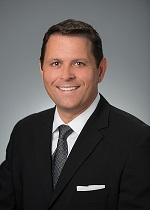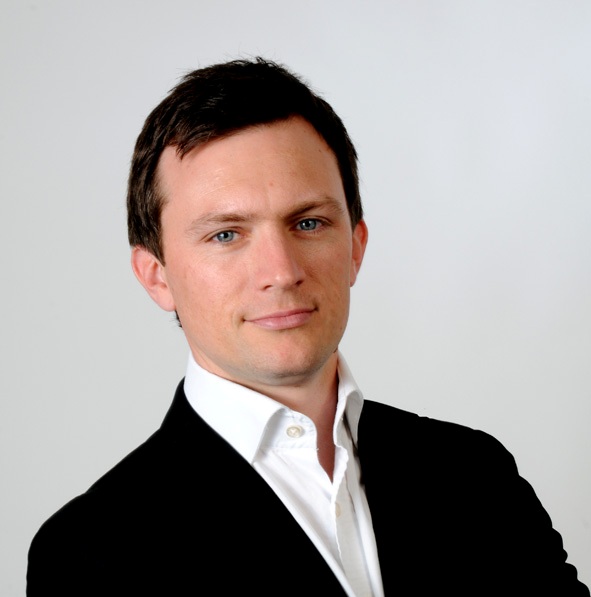There are several big factors impacting medical device technology field today. Key trends include consolidation, focused research spending and international strategy. However, even as the field tightens and becomes tougher, spine device companies are growing larger, going public and launching their products on a global scale.
Like healthcare providers in general, device companies are focused on providing better quality care at a lower cost. This momentum is driving several industry trends, such as:
• Minimally invasive technology
• Spinal fusion alternatives
• New sales models
• Advocacy efforts for payer coverage
• Expansion into less developed markets
 There are also challenges hospitals making an impact on purchasing decisions. "You are starting to see horizontal integration in the healthcare providers space," says Mazor Senior Vice President Christopher Prentice. "The larger centers are buying the smaller ones and payers are purchasing other payers. The hospitals and healthcare systems are employing surgeons and employing standardized vendors across the board."
There are also challenges hospitals making an impact on purchasing decisions. "You are starting to see horizontal integration in the healthcare providers space," says Mazor Senior Vice President Christopher Prentice. "The larger centers are buying the smaller ones and payers are purchasing other payers. The hospitals and healthcare systems are employing surgeons and employing standardized vendors across the board."
However, the global spine surgery market is still expected to grow. MarketsandMarkets says the global spine surgery market will reach $14.8 billion by 2017. The United States is currently the world's leader in the spinal fusion market, but their market share is expected to decline from 71 percent in 2013 to 63 percent in 2020.
Minimally invasive technology
Less invasive procedures can induce cost savings by eliminating the need for blood transfusions, shortening recovery time so patients spend less time in the hospital, improving outcomes so patients can return to work more quickly and allowing the procedure to move into the outpatient setting.
Additional tools such as robotic guidance could improve minimally invasive spine surgeries as well. "Most of the research and development is focused on designing technology for the improvement of our specialty," says Sarasota, Fla.-based spine surgeon Thomas Sweeney, MD. "I've had a life-changing, or practice-changing, experience last fall when our hospital acquired the Mazor robot. I've been a fanatic with regards to new minimally invasive techniques and enjoyed my role in developing new technologies."
The operating robot is designed for more precise pedicle screw placement. At the same time, it exposes the patient and physician to less radiation than fluoroscopy and makes the procedure more reproducible.
"It allowed me to transition my practice from 80 percent minimally invasive to 100 percent minimally invasive and be more accurate," says Dr. Sweeney. "We do large reconstructive spinal surgeries, and the technology actually helped us reduce costs. We're also doing some of these cases on an outpatient basis."
If medical devices can truly improve outcomes, they'll be more widely accepted and implemented across the country. "We need the ability to show a technique can replicate the intent as closely as possible," says Mr. Prentice. "You'll see technology that helps execute this intent, limit the variability and improve the outcome."
Spinal fusion alternatives
Traditionally spinal fusions were an expensive procedure without much evidence to support their use. Fusion still holds the lion's share of the spine surgery market, but motion-sparing techniques are gaining steam. Both artificial disc replacements and regenerative solutions are becoming more prevalent in research, development and utilization. The artificial disc market is expected to reach $1.6 billion by 2022.
Less invasive procedures can be performed in the outpatient setting. The outpatient ASCs generally operate more efficiently than hospitals, with a lower infection rate and lower overall costs. More spine procedures are being taken into the outpatient setting — new spine systems and pain management techniques make it clinically possible — and payers are more willing to reimburse in the lower-cost setting now as well.
Disc regeneration is another potential area for growth, but most solutions are still in the basic science stage and aren't widely available for use in the United States.
New sales models
Some of the hurdles healthcare providers have to providing comprehensive care will disappear as everyone comes under the same roof for coordinated care. However, downward pressure on reimbursements and less competition means hospitals will have more leverage in negotiations with outside vendors, including device companies.
"A lot of the hurdles we have from disparate players in the market will go away because we'll have one player. Whether it's an ACO or not, hospitals are employing physicians and becoming insurance companies, so they are everything," says Mr. Prentice. "We're also dealing with price transparency. We'll be able to see how much things cost from one hospital to another and what different hospitals are paying for. There will be comparative pricing for outcomes versus cost, and that will be a test for medical technology."
However, some companies are developing new strategies to meet the market's unique needs. They are selling commoditized implants directly to hospitals, cutting out the sales representatives and lowering the overall cost. This could be disrupting the device company giants in the future; Smith & Nephew recently announced a new sales model — Syncera — designed for hospitals that can't cover the cost of the full service agreement.
Smith & Nephew will sign a multi-year contract with participating hospitals to sell hip and knee implants at one-third the initial price but still provide an operating room technician. The company expects their new model to generate 40 percent to 50 percent overall cost savings for customers.
Titan Spine also recently introduced an innovative tactic for attracting cash-strapped customers — guaranteeing their product's success. The company now offers a five-year warranty on its spinal interbody fusion devices. They'll send a one-time replacement for any device if the patient undergoes a revision surgery within five years after the initial surgery.
New technology and payer coverage
There is always new technology on the horizon, but gaining payer coverage is often difficult. This year, the CPT Editorial Panel announced new codes for minimally invasive sacroiliac joint fusions, cervical disc replacement and two-level disc replacement procedures. But these changes didn't happen in a vacuum; professional organizations and device companies spent hours lobbying for coverage and discussing procedure advantages with patients.
Other new and exciting technologies in spine are just beginning the process, including three-dimensional printing. The 3D printing market is expected to generate more than $4 billion by 2018, and these customized printed medical models could reduce surgical time and improve quality. In June, Medicrea announced that a surgeon in France performed the world’s first spinal fusion surgery using customized spine cages created with a 3-D printer. Medicrea's 3D-printed UNiD ALIF customized cages are part of the company's entire patient-specific spine implant offerings, which also include the UNiD patient specific spine rods.
 "This technology allows us to deliver a unique device in the ideal dimensions for a specific patient," says Director Marketing & Product Development David N. Ryan at Medicrea. "We believe surgical outcomes will be improved by using devices that are customized for each patient. We also believe the patient-specific method improves the economics of surgery because we are only delivering one specific set of implants to the surgeon instead of hundreds and asking the surgeon to pick one. All together, we have received positive feedback from surgeons."
"This technology allows us to deliver a unique device in the ideal dimensions for a specific patient," says Director Marketing & Product Development David N. Ryan at Medicrea. "We believe surgical outcomes will be improved by using devices that are customized for each patient. We also believe the patient-specific method improves the economics of surgery because we are only delivering one specific set of implants to the surgeon instead of hundreds and asking the surgeon to pick one. All together, we have received positive feedback from surgeons."
Despite being a smaller player in the global spine market, Medicrea decided to invest in 3D printing because of their ability to respond to surgeon requests. "We need to handle everything ourselves and understand the technology inside and out," says Mr. Ryan. "There are other suppliers coming up that offer that service, but it requires deep knowledge from working with surgeons closely to produce the best results."
Global expansion
Many companies are expanding globally. While developed markets still account for the highest percentage of revenues in most cases, emerging markets such as the Asia-Pacific offer a huge potential for growth. The Asia-Pacific spinal implant and bone graft substitute market is expected to double through 2022, reaching nearly $7 billion.
"There are obviously expanding markets in a lot of areas, but the United States is still the biggest market in the spine arena," says Mr. Ryan. "The developing markets are learning a lot from the United States and Western European countries. We're working to connect key surgeons with educational platforms to make sure as many doctors are on the same level to ensure the majority of patients receive the best possible care in the areas where these procedures are being performed."
However, these new markets aren't without their challenges.
"Companies looking to enter the Asia Pacific spinal implant and BGS market need to be conscious of different regulator bodies and cultural preferences in different countries," said DRG Analyst Hamza Sajjad. "As an example, Chinese physicians rarely use xenografts or allografts because of a cultural aversion to using human or animal tissue, while Australia does not allow for the use of xenografts. As a result, the Asia Pacific market can be complex to navigate as a whole, especially for the smaller competitors."
Within the past year, Amedica, K2M and LDR joined NuVasive as public companies focused on spine devices. All three have global strategies and are pursuing new partnerships abroad. Hoffman Estates, Ill.-based Life Spine also announced entered the China market and Titan Spine expanded its interbody devices to the U.K.

